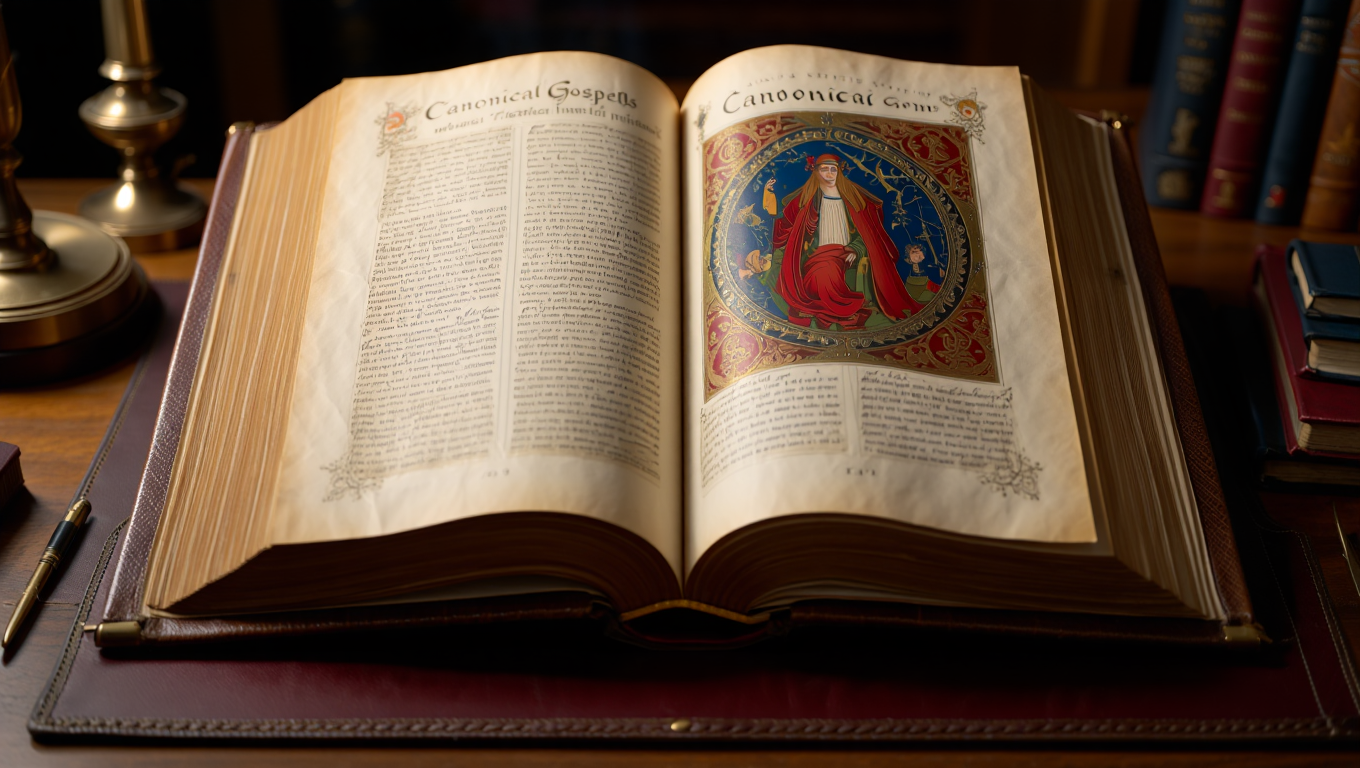The Talmud and Midrash are commentative and interpretative writings in Jewish literature. While they are interconnected, they serve distinct purposes in the study and understanding of Jewish teachings and traditions.
The Talmud is a compilation of ancient teachings, consisting of the Mishna and the Gemara. It is considered sacred and normative by traditional religious Jews. On the other hand, the Midrash refers to a mode of biblical interpretation and a separate body of commentaries on Scripture. It provides additional explanations and narratives to assist in the interpretation of the Torah.
Understanding the difference between the Talmud and Midrash is crucial for delving deeper into Jewish literature and gaining insights into Jewish thought and practice.
Key Takeaways:
- The Talmud is a compilation of ancient teachings, while the Midrash refers to a mode of biblical interpretation and a separate body of commentaries.
- The Talmud is considered sacred and normative by traditional religious Jews.
- The Midrash provides additional explanations and narratives to assist in the interpretation of the Torah.
- Both the Talmud and Midrash have played significant roles in shaping Jewish thought and practice.
- Understanding the difference between the Talmud and Midrash is crucial for gaining insights into Jewish literature and traditions.
Definition of Terms
The Talmud and the Midrash are two important components of Jewish literature that play a crucial role in the interpretation and understanding of the Torah. It is essential to have a clear definition of these terms to comprehend their significance and the distinctions between them.
Talmud Definition
The Talmud, derived from the Hebrew word meaning “study” or “learning,” is a comprehensive compilation of ancient teachings and commentaries in Jewish literature. It consists of two main components: the Mishna and the Gemara.
| Mishna | Gemara |
|---|---|
| The Mishna is a collection of oral laws that supplement the scriptural laws found in the Torah. It addresses various topics ranging from ethics and theology to agriculture and history. The Mishna serves as the foundation of the Talmud and provides a framework for further analysis and interpretation. | The Gemara is a compilation of commentaries and elaborations on the Mishna. It includes discussions, debates, and interpretations by various rabbis over several centuries. The Gemara extends and expands upon the teachings of the Mishna, providing additional insights and perspectives on Jewish law and tradition. |
Midrash Definition
The term “Midrash” refers to both a mode of biblical interpretation and a separate body of commentaries on Scripture. Initially, Midrash was a philological method used to interpret the literal meaning of biblical texts. Over time, it evolved into a sophisticated interpretive system that reconciled contradictions, established new laws, and enriched the content of the Torah with new meaning.
While the Talmud serves as a compilation of teachings and commentaries, the Midrash provides additional explanations and narratives to enhance the understanding of the Torah. It offers insights into the historical, ethical, and theological aspects of the biblical text, helping to illuminate its deep and profound teachings.
Opposition to the Talmud
Despite the central place of the Talmud in traditional Jewish life, it has faced significant opposition throughout history. Various groups and movements have criticized and rejected the Talmud for different reasons, challenging its authority and relevance.
One notable opposition came from the Karaite sect in Babylonia, which refuted the oral tradition and denounced the Talmud as a rabbinic fabrication. They believed that the written Torah should be the sole authority in Jewish religious practice.
Medieval Jewish mystics also expressed opposition to the Talmud, viewing it as a mere shell that covered the concealed meaning of the written Torah. They sought esoteric interpretations and spiritual insights beyond the legalistic approach of the Talmud.
The Haskala movement and Reform Judaism in the 18th and 19th centuries secularized Jewish life and rejected the Talmud as a medieval anachronism. They emphasized intellectual freedom, modernity, and a departure from traditional religious practices and beliefs.
In addition to internal opposition, the Talmud was frequently attacked by external forces. The church accused it of falsifying biblical meaning and preaching bias against non-Jews. As a result, the Talmud faced periods of censorship and banishment in various regions throughout history.
Opposition to the Talmud:
| Opposing Group/Movement | Reasons for Opposition |
|---|---|
| Karaite sect | Refutation of oral tradition and denouncement of Talmud as rabbinic fabrication |
| Medieval Jewish mystics | Viewing Talmud as a mere shell hiding the concealed meaning of the written Torah |
| Haskala movement and Reform Judaism | Secularization of Jewish life and rejection of the Talmud as a medieval anachronism |
| The Church | Accusations of falsifying biblical meaning and promoting bias against non-Jews |
Content, Style, and Form
The Talmud is a comprehensive compilation that covers a wide range of subject matters, providing extensive discussions and interpretations of various topics. It encompasses diverse areas such as agriculture, ethics, history, theology, and more. The Talmudic academies, known as yeshivot, were centers of rigorous study and intellectual discourse, where rabbis engaged in dialectic debates to explore the meaning and application of Jewish law and tradition.
The Talmud is written in a unique dialectic style, reflecting the spirit of open discussion and debate prevalent in these academies. It presents contrasting opinions, allowing readers to engage critically with the text and arrive at their own conclusions. This style of discourse encourages active interpretation and textual examination, fostering a culture of intellectual growth and deepening understanding.
In the Talmud, discussions often unfold in the form of question-and-answer exchanges, where one rabbi poses a question or presents a legal problem, and another rabbi responds with a counterargument or offers a solution. This back-and-forth dialogue stimulates intellectual engagement and sharpens analytical thinking.
Table: Talmudic Discourse
| Talmudic Element | Description |
|---|---|
| Mishnah | Oral laws supplementing scriptural laws |
| Gemara | Commentaries and elaborations of the Mishnah |
| Yeshivot | Talmudic academies for rigorous study and discourse |
| Dialectic Style | Open discussion and debate format |
| Question-and-Answer | Interactive dialogue between rabbis |
The Talmud’s text-centered approach influenced the thinking and literary style of the rabbis. Its inclusion of stories, legends, and anecdotes serves not only as illustrative examples but also as a means of conveying deeper insights and spiritual teachings. By integrating narrative elements into the legal and philosophical discussions, the Talmud enriches the learning experience and engages readers on multiple levels.
The Talmud is a testament to the richness and complexity of Jewish thought and scholarship. Its content, style, and form continue to inspire intellectual curiosity and stimulate the exploration of Jewish law, ethics, and theology.
Modes of Interpretation and Thought
The Talmud and Midrash employ distinct methods of interpretation and thought in their approach to Jewish literature. The Midrash initially began as a philological method, focusing on the literal meaning of biblical texts. However, over time, it developed into a sophisticated interpretive system that reconciled contradictions, established new laws, and enriched the content of the Bible with new insights.
The Talmud, on the other hand, utilizes a variety of interpretive approaches influenced by both logical and textual schools. It quotes from Midrashic collections and employs logical reasoning to analyze and interpret the Mishna, the central text of the Talmud. Through these interpretive methods, the Talmud explores contradictions, solves new problems, and offers reinterpretations guided by the principles of Jewish law.
Both the Midrash and the Talmud play integral roles in the interpretation and understanding of Jewish texts. While the Midrash focuses on the narratives and meanings within the written Torah, the Talmud extends its interpretations to the Mishna, creating a comprehensive body of Jewish religious literature.
Examples of Midrashic and Talmudic Interpretation
Midrashic interpretation often involves taking a verse from the Bible and elaborating on its meaning through storytelling or allegory. For example, the Midrash might expand on the story of Adam and Eve’s sin in the Garden of Eden, providing additional details and moral lessons. This approach allows for a deeper understanding of the text and its relevance to everyday life.
Talmudic interpretation, on the other hand, focuses on analyzing legal and ethical issues presented in the Mishna and applying logical reasoning to derive new laws and principles. For example, the Talmud might explore a case of monetary dispute and debate the appropriate legal resolution based on existing laws and precedents.
| Midrashic Methods | Talmudic Interpretation |
|---|---|
| Philological interpretation of biblical texts | Logical analysis of legal and ethical issues |
| Expansion of biblical narratives through storytelling | Application of existing laws to new situations |
| Establishment of new laws and principles | Resolution of legal and ethical disputes |
History of Midrash
The history of Midrash can be traced back to the times of oral Torah teachings within the Jewish community. It was during this period that the Mishnah and Gemara, which form the foundation of the Talmud, were eventually written down. The oral tradition of Midrash allowed for a deeper understanding and interpretation of the Torah, providing additional insights and narratives to enrich biblical texts.
One significant archaeological discovery that shed light on the history of Midrash is the Dead Sea Scrolls. These ancient manuscripts, discovered in the 20th century, contain midrashic-like commentaries on the Bible. The Dead Sea Scrolls provide valuable insights into the methods and techniques employed by ancient Jewish scholars as they interacted with scripture, offering glimpses into their interpretive processes.
The inclusion of the Mishnah and Gemara in the Talmud was a response to the exile and persecution of the Jewish people, as well as the need to preserve and codify the oral traditions and teachings. These written texts allowed for the continuity and accessibility of Jewish religious knowledge, ensuring that it could be studied and practiced even in challenging circumstances.
While the Talmud and Midrash are distinct in their purpose and approach, they are interconnected components of Jewish literature. The Talmud provides the framework and foundation for interpreting Jewish law and tradition, while the Midrash offers additional insights and narratives to enhance the understanding of the Torah. Together, they have played significant roles in shaping Jewish thought, practice, and religious tradition throughout history.
| Key Discoveries | Implications |
|---|---|
| Oral Torah Teachings | Midrash originated from the times of oral Torah teachings in the Jewish community. |
| Mishnah and Gemara | The inclusion of the Mishnah and Gemara in the Talmud was a response to exile and persecution. |
| Dead Sea Scrolls | The discovery of the Dead Sea Scrolls provided insights into ancient Jewish methods of interacting with scripture. |

Conclusion
In conclusion, the Talmud and Midrash are two integral components of Jewish literature that serve different purposes in the interpretation and understanding of the Torah. The Talmud, consisting of the Mishna and the Gemara, is a compilation of ancient teachings and commentaries that are considered sacred and normative by traditional religious Jews.
On the other hand, the Midrash is a separate body of commentaries on Scripture that provides additional explanations and narratives to assist in the interpretation of the Torah. It offers a mode of biblical interpretation that goes beyond the literal meaning of the text, enriching it with new layers of understanding and exploring the deeper meanings of the biblical stories.
Both the Talmud and the Midrash have played significant roles in Jewish religious tradition and have shaped the development of Jewish thought and practice. They have contributed to the ongoing dialogue and interpretation of the Torah, fostering intellectual engagement and promoting the exploration of diverse perspectives within the Jewish community. Understanding the key differences between the Talmud and Midrash is essential for appreciating the richness and depth of Jewish literature and its impact on Jewish culture and spirituality.
FAQ
What is the difference between the Talmud and Midrash in Jewish literature?
The Talmud is a compilation of ancient teachings, consisting of the Mishna and the Gemara, while the Midrash refers to a mode of biblical interpretation and a separate body of commentaries on Scripture.
What is the definition of the Talmud and Midrash?
The Talmud is a set of books that includes the Mishna, which consists of oral laws supplementing scriptural laws, and the Gemara, which is a collection of commentaries and elaborations of the Mishna. The term Midrash refers to a mode of biblical interpretation and also a separate body of commentaries on Scripture.
Has there been opposition to the Talmud?
Yes, the Karaite sect in Babylonia refuted the oral tradition and denounced the Talmud as a rabbinic fabrication. Medieval Jewish mystics saw the Talmud as a mere shell covering the concealed meaning of the written Torah. The Haskala movement and Reform Judaism in the 18th and 19th centuries secularized Jewish life and rejected the Talmud as a medieval anachronism. The Talmud was also frequently attacked by the church, accusing it of falsifying biblical meaning and preaching bias against non-Jews.
What does the Talmud cover and what is its style?
The Talmud covers a wide range of subject matters, including agriculture, ethics, history, theology, and more. It is presented in a unique dialectic style, reflecting the spirit of open discussion and debate prevalent in the Talmudic academies. The mention of a name, situation, or idea often leads to the introduction of a story or legend to further the discussion.
What are the modes of interpretation used in the Talmud and Midrash?
The Talmud uses both logical and textual schools of interpretation, while the Midrashic collections provide additional explanations and narratives to assist in the interpretation of the Torah. The Talmud treats the Mishna in the same way that Midrash treats Scripture, explaining contradictions and solving new problems through reinterpretation.
What is the history of Midrash?
Midrash dates back to the times of oral teachings of the Jewish community. The Mishnah and Gemara, which form the basis of the Talmud, were written down due to the exile and persecution of the Jewish people. The Dead Sea Scrolls, discovered in the 20th century, contain midrashic-like commentaries on the Bible and offer insights into ancient Jewish methods of interacting with scripture.
 Skip to main content
Skip to main content


